*This post may contain affiliate links. Read more »
I fell in love with bulgur pilavi in tiny, hidden towns throughout Turkey. In 2006 my family and I spent a winter exploring Turkey. We were especially there to bask in the weird spectral light of the total solar eclipse due to pass through the southern part of the country (Antalya). Anyway, I put this recipe together with very clear step-by-step instructions to help you nail making it on your first shot, and avoid having clumpy, overcooked bulgur once and for all!
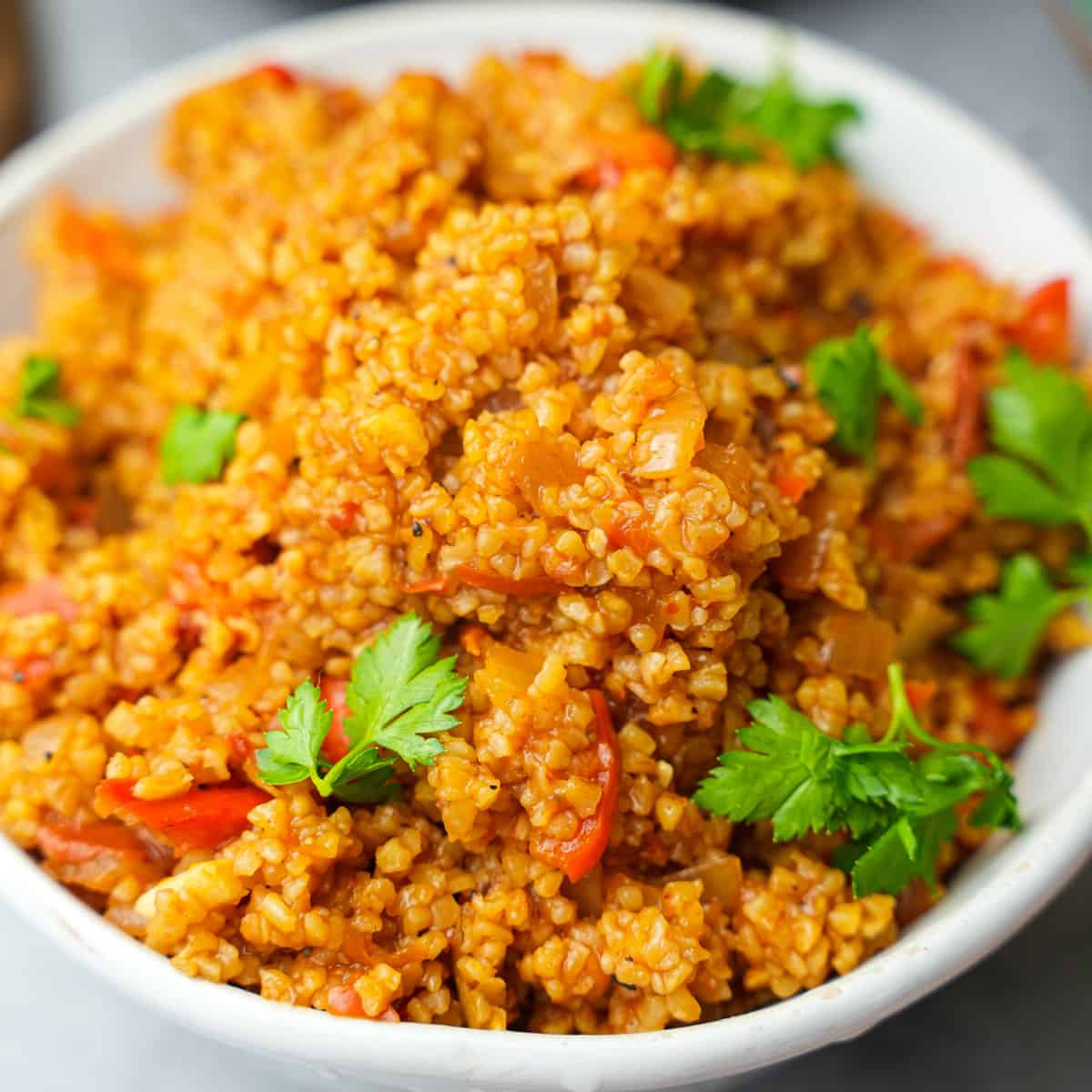

Enter your email & I'll send it to your inbox. Plus, get great new recipes from me every week!
By submitting this form, you consent to receive emails from Cinnamon Snail.
Being vegan in Turkey, at least back in 2006, wasn’t the easiest. We ate our share of ezme salad and ekmek (the crusty, crispy white loaves of bread that Turkish bakeries sell hot), and we would slather them with olive oil, parsley and pickled hot peppers.
But we couldn’t survive on bread and occasionally baklava alone (you should check out my vegan pistachios baklava recipe if that’s your jam). Wandering around looking for fellah koftesi without meat, I followed my nose and found myself in a small, cozy restaurant. There, I was greeted by the warm smiles of the staff and the intoxicating aroma of domatesli bulgur pilavı, a vegan dish my family was super-delighted to stumble upon.
In that moment, I knew that bulgur pilavı was more than just a dish - it was a simple work of art, a culinary masterpiece that captured the essence of Turkey and the beauty of vegan cuisine. And as I savored the last bite, I felt a deep sense of gratitude and joy for the experiences and flavors that make life so rich and rewarding. We spent months falling in love with Turkey's diverse regions and culinary styles.
So, what are you waiting for? Grab a bowl and dig in to the ultimate vegan comfort food!
Jump to:
🥰Why you'll adore this Turkish Bulgur recipe
🌱 No Animals Harmed: 100% vegan and cholesterol-free!
💪 Nutritious: Packed with protein, fiber, and nutrients from veggies and herbs—a healthy, satisfying meal.
🏃♀️ Easy to Make: Quick, simple, and beginner-friendly—ideal for busy weeknights.
💰 Affordable: Made with budget-friendly, easy-to-find ingredients.
🇹🇷 Authentic Taste of Turkey: This is one of the Turkish recipes that is not "veganized". It is just how you will find it served in Turkey, as one of the country’s few dishes that just happens to be completely plant-based.
🔥 If you like Kisir, you'll love this: Similar to the bulgur-based salad Kisir, but served hot with foolproof texture thanks to cooking.


Transform Your cooking with Turkish Vegan Magic
This 6-day program is 100% FREE. Get Ready to Master Turkish Vegan Cuisine!
🍅 Ingredients in this bulgur pilaf recipe
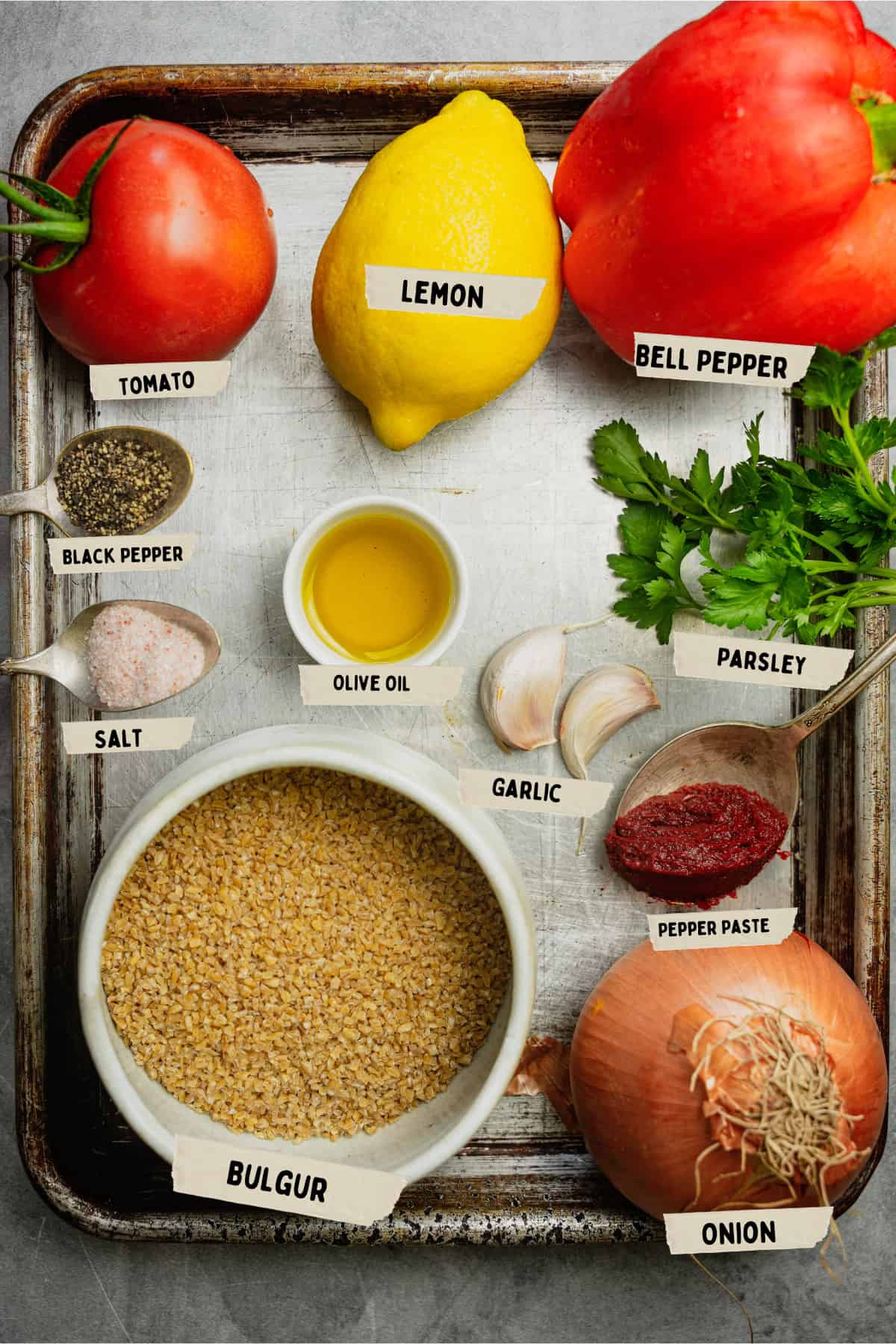
🌶️Turkish pepper paste
This Domatesli bulgur pilavı recipe is made with a specific type of Turkish pepper paste called "tatlı biber salçası." This mild pepper paste is made from a blend of sweet red peppers that are slow-roasted, peeled, and pureed. The result is a thick, velvety paste with a deep red color and a sweet, smoky flavor. I also use it in my cranberry ezme, and Turkish stuffed cabbage.
If you cannot find biber salçası, use an equal amount of tomato paste in this recipe, as the flavor and consistency are not far off.
🌾Coarse bulgur
Coarse bulgur wheat is a healthier alternative to other grains such as white rice or couscous, as it is higher in fiber, protein, and essential vitamins and minerals. It is also a low-fat food and is low in calories, making it a great option for those who are looking to maintain a healthy diet. The fine stuff is better used in making mercimek kofte, or cif kofte.
🍋Lemon juice
In the case of the Domatesli bulgur pilavı, the lemon juice serves as a natural flavor enhancer. Adding acidity makes the sweetness of the tomatoes, pepper, and pepper paste more complex and balanced tasting. If you don’t have lemon, I recommend using a tiny splash of vinegar to provide this important function in the recipe.
See the recipe card at the bottom of this page for the complete list of ingredients and their quantities.
🤯 Other Turkish bulgur recipes
There are many Turkish bulgur wheat recipes you can mess with to add some pizazz to your rootin-tootin day. Here are a few ideas:
Mushroom Bulgur Pilaf
Sauté sliced oyster mushrooms with onions and garlic, then add them to the bulgur mixture along with vegetable broth and cook as usual. The mushrooms add a meaty texture and umami flavor to the dish.
Spicy Red Lentil & Turkish Bulgur Recipe
Cook red lentils with vegetable broth until tender, then stir in cooked bulgur, diced tomatoes, green onions, and a spicy pepper paste (like harissa, zhoug, or shatta paste). The lentils add protein and fiber, while the spicy paste adds a kick of flavor.
Straight-up Tabouli
Tabouli (AKA taboulé and tabooleh) is basically a Middle Eastern and Mediterranean riff on this dish. I have an outstanding and easy taboule recipe that you will love! It is also easy to modify to be gluten-free if that’s you thing. So go geddddder!
📖 How to make Bulgur Pilavi
Get ready to dive into the delicious world of Turkish cuisine with this step-by-step guide for making Domatesli Bulgur Pilavı! I’ll take you through each stage of the cooking process, with detailed instructions and pretty, pretty pictures to guide you along the way. Or you can follow along with the easy-to-print recipe card towards the bottom of this page.
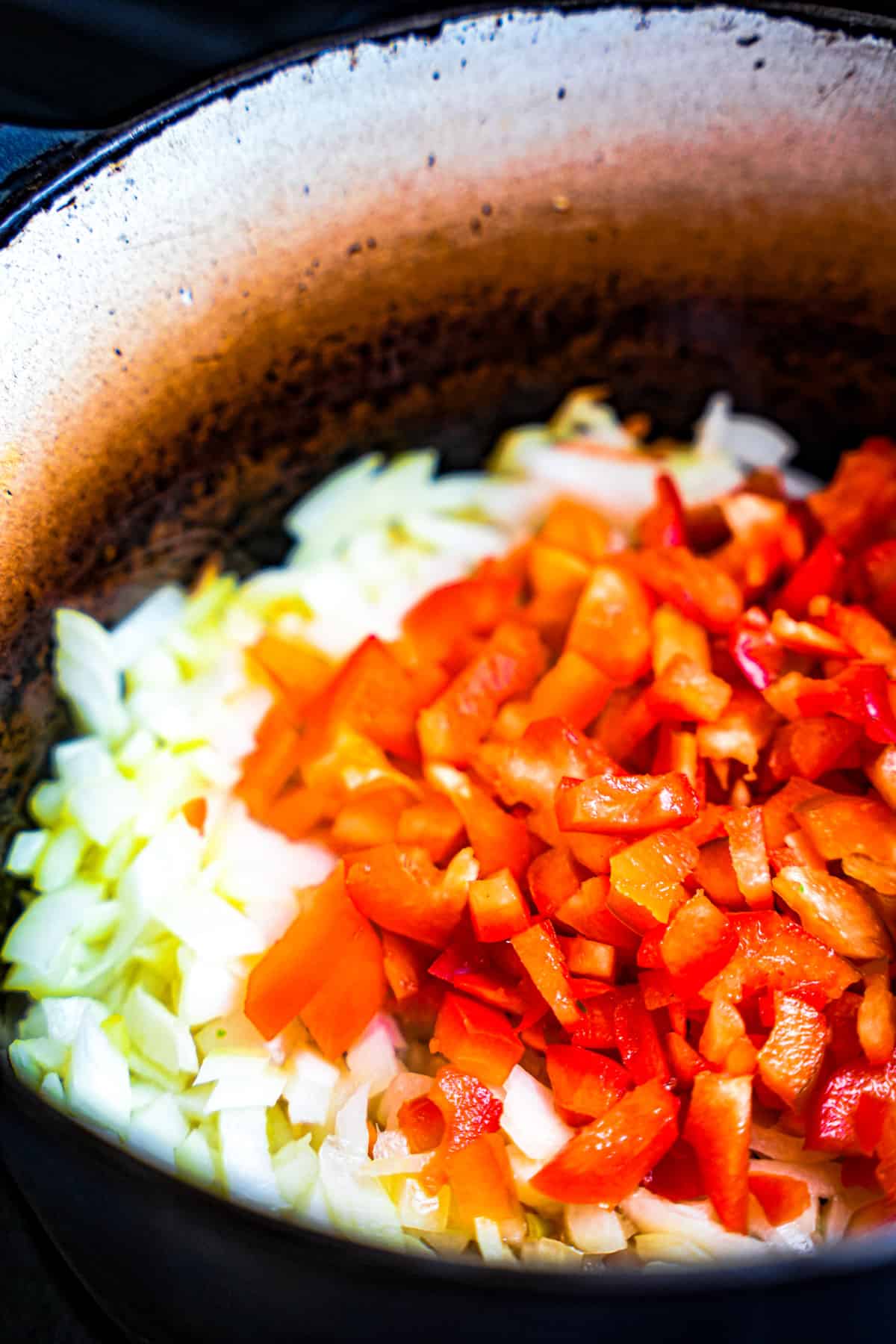
Step 1
Begin by heating up olive oil in a 4-quart pot over medium heat for approximately 60 seconds. Once the oil is hot, stir in one chopped onion and one chopped pepper and sauté them for around four minutes until the onion starts to sweat.
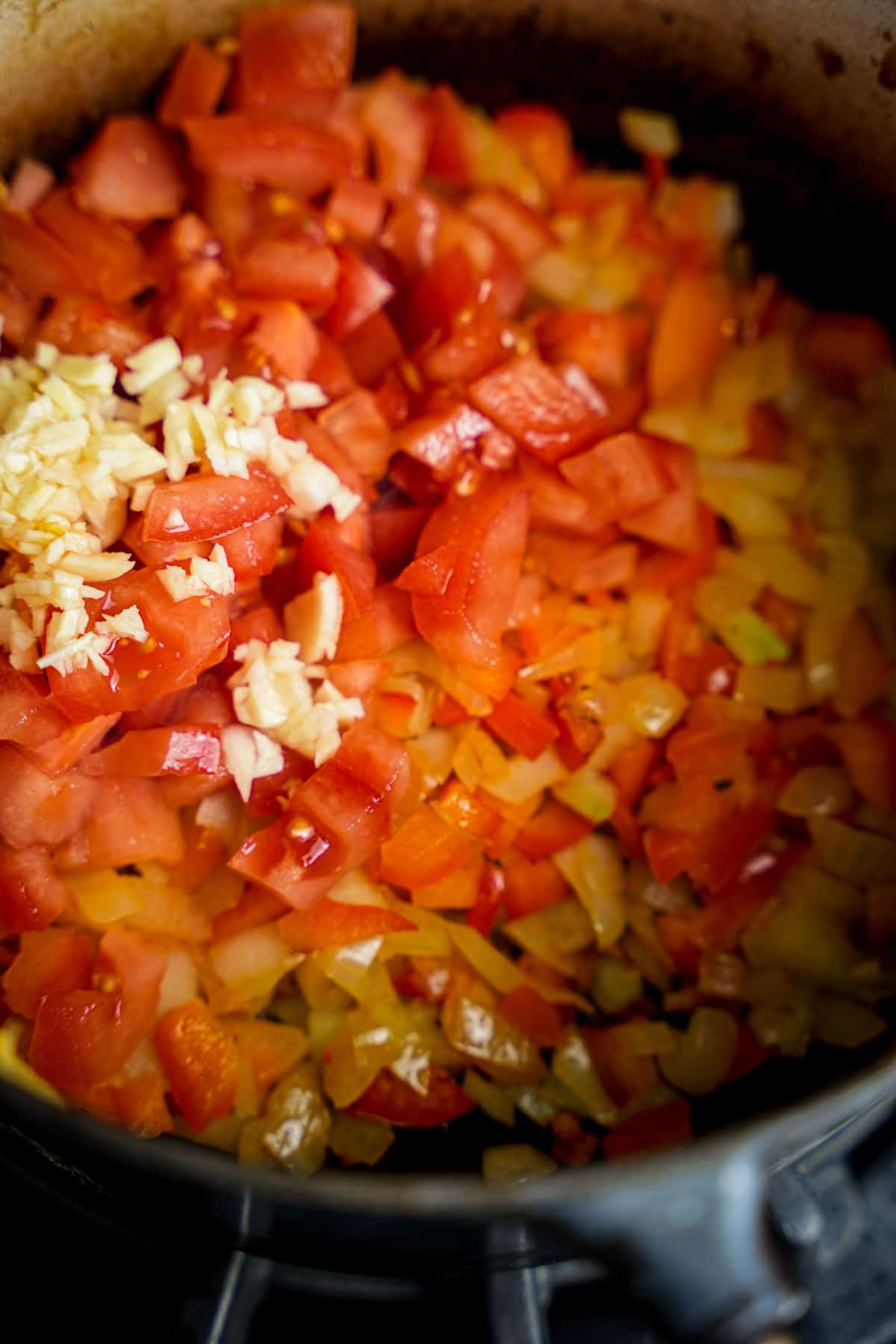
Step 2
Add in 2 minced garlic cloves and 1 diced tomato and cook everything together for another 3 minutes until the tomatoes start to break down.
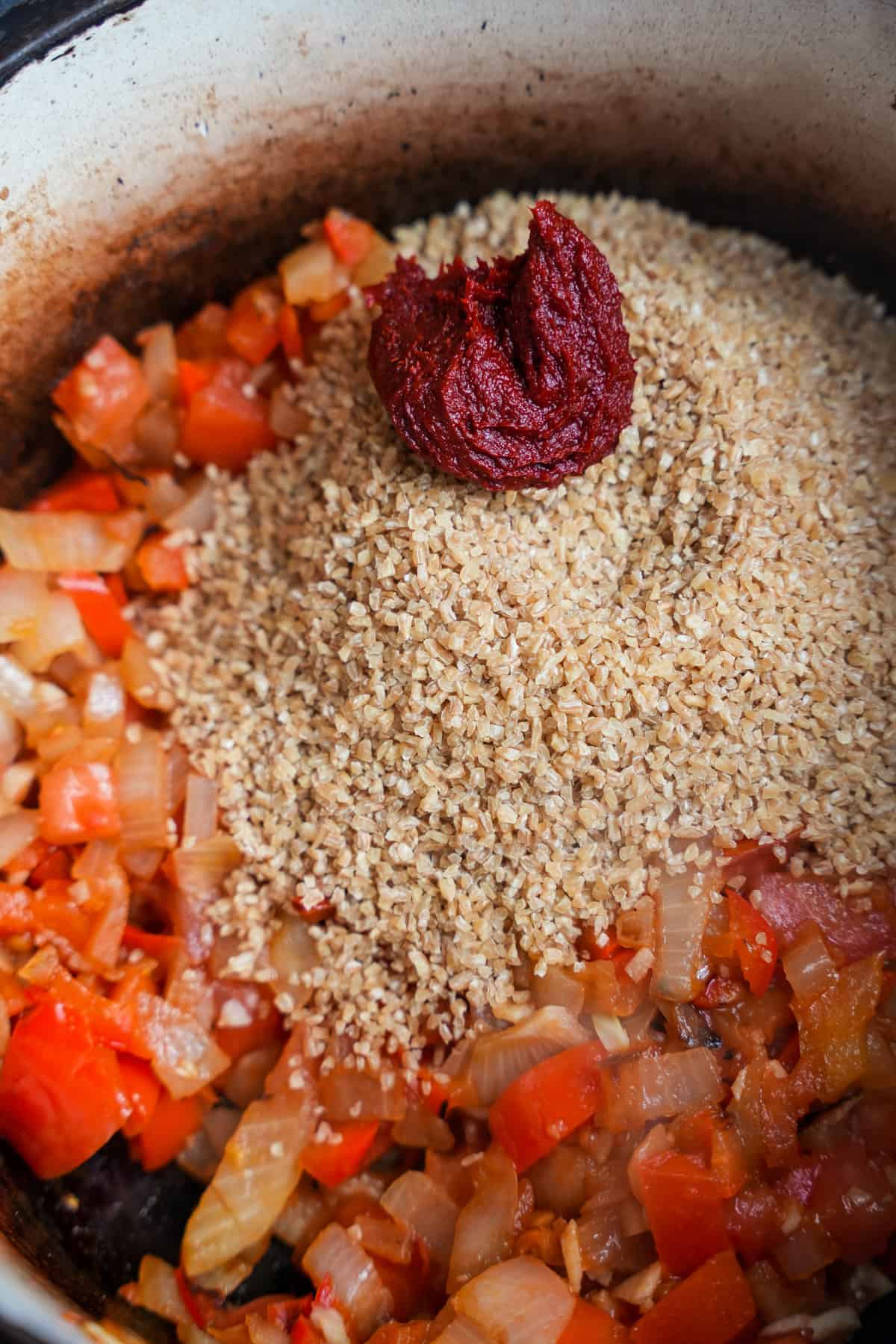
Step 3
Next, stir in the pepper paste, (or tomato paste if you don't have salça) and one cup of bulgur wheat. Saute the bulgur for approximately 3 minutes, stirring it constantly to ensure it doesn't stick to the pot.
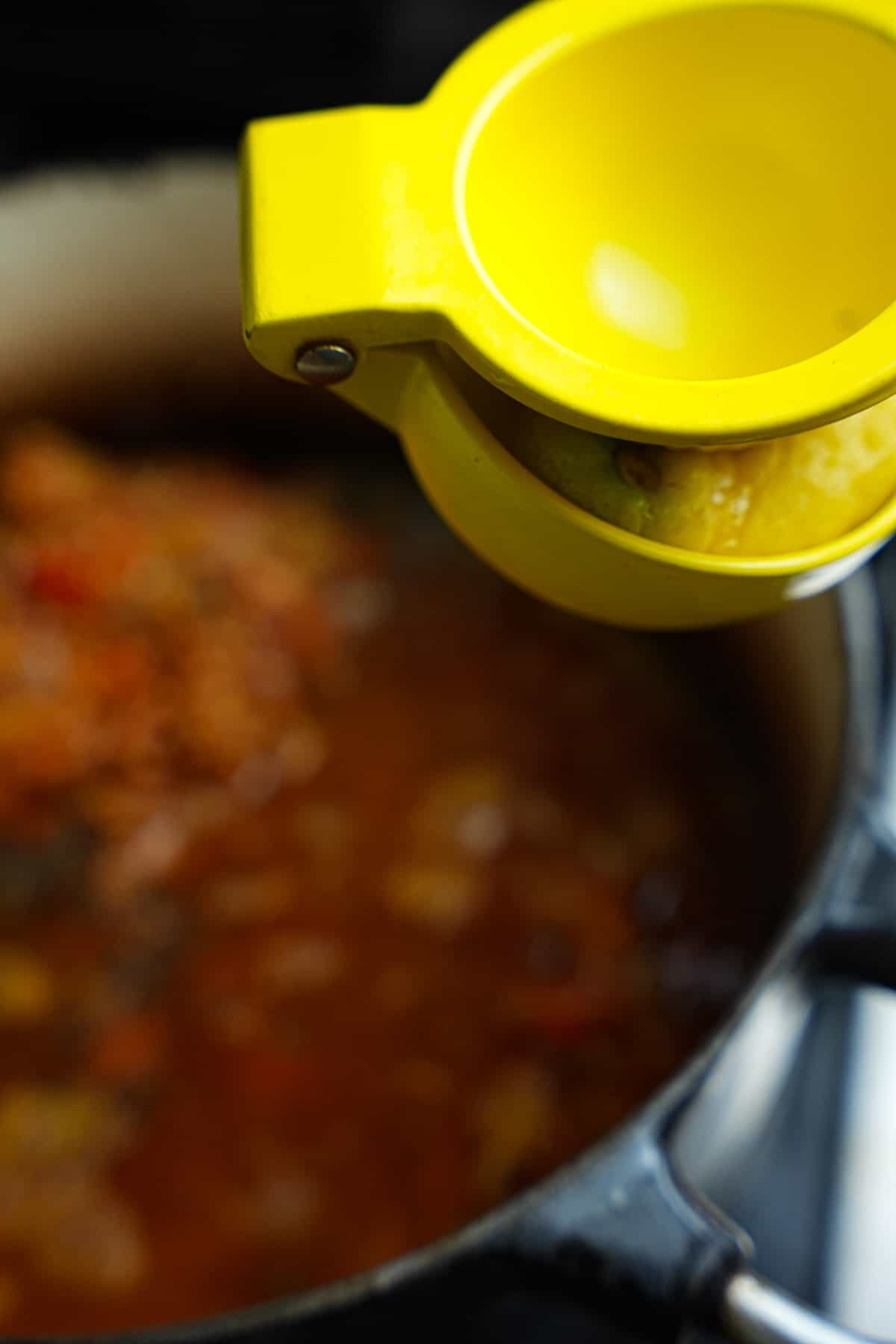
Step 4
Then, turn up the heat to high and add the water, lemon juice, salt and pepper to taste.
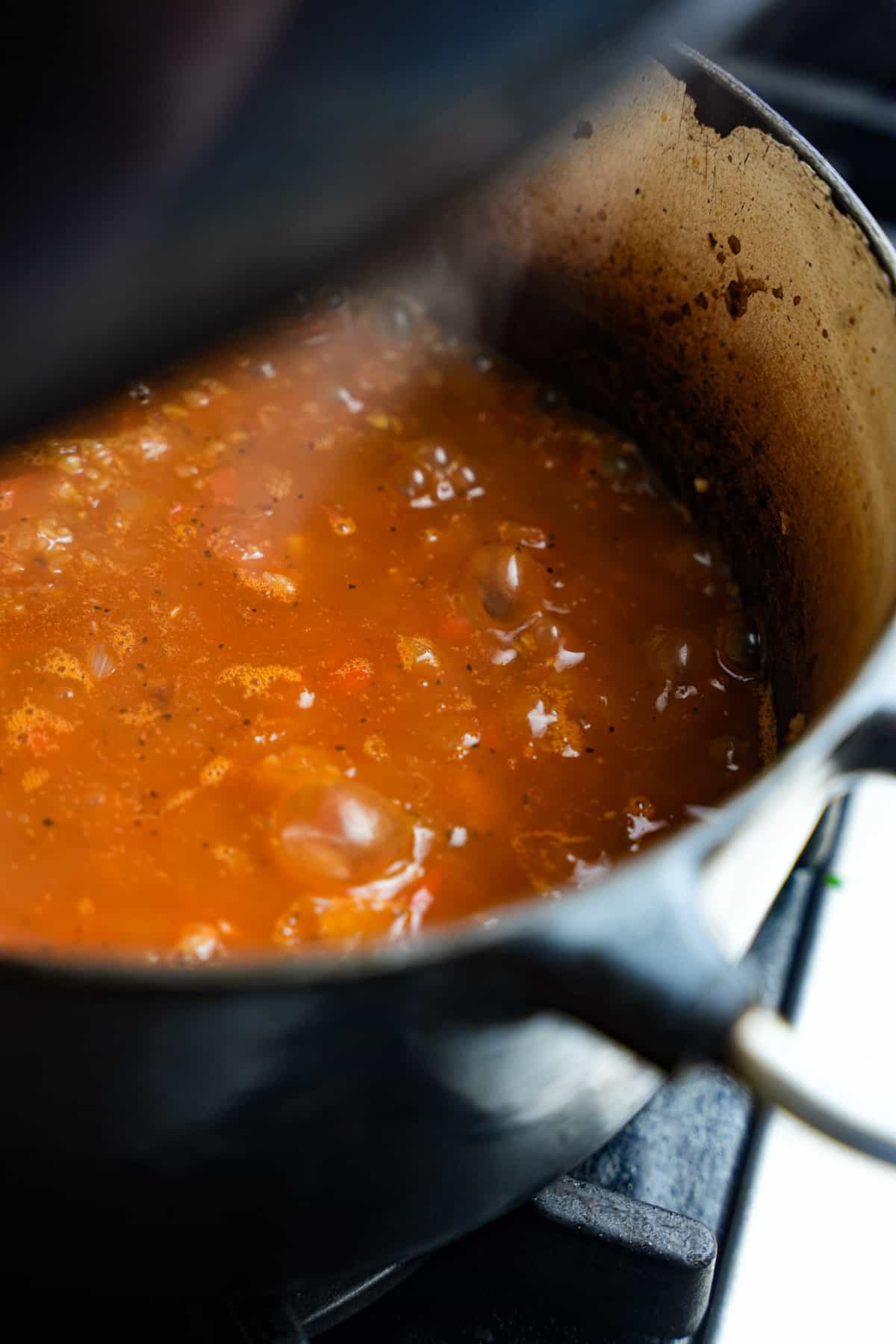
Step 5
Once the water begins to boil, cover the pot with a lid and reduce the heat to low. Let everything simmer together for 8-10 minutes until the bulgur has absorbed the liquid. Once it's ready, remove it from the heat and let it sit covered for 15 minutes as it cools down.
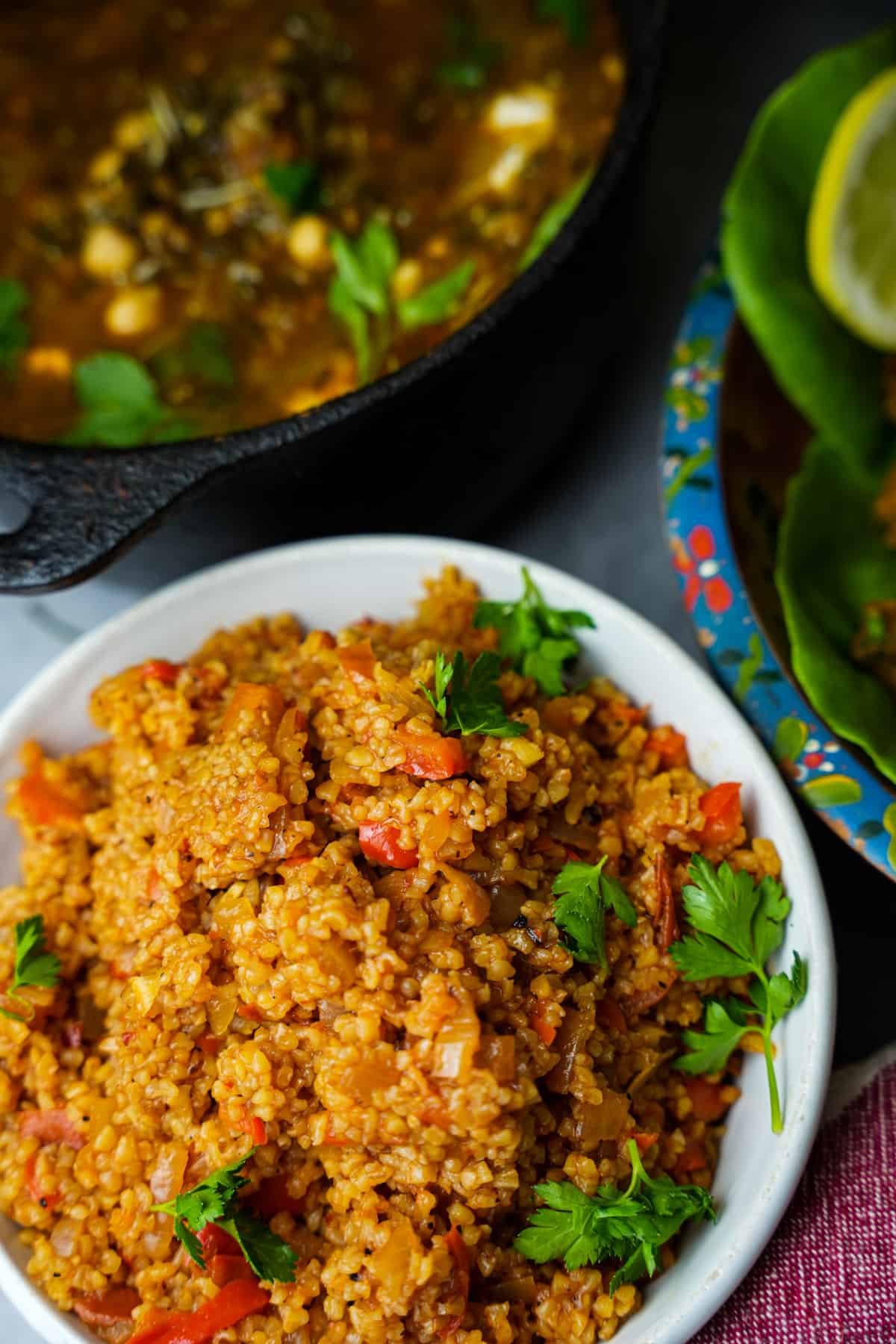
Step 6
Don't forget to add your favorite fresh herbs before serving your flavorful bulgur pilaf as a delicious side dish to have with Barbunya Pilaki or Yalya Corbasi!
💡What to serve with Turkish bulgur
Turkish bulgur pilaf shines when it is served with delicious dishes that drip into it, as you might serve a rice pilaf. Try serving it with a ladle full of hearty Zeytinyağlı Kereviz, Loubia (Moroccan white beans), Şakşuka (Turkish fried eggplant), or some roasted vegan kofta dripping with tzatziki sauce on top. For a Lebanese vibe, top it with some creamy tahini dressing, or pair it with some savory baharat roasted oyster mushroom shawarma on freshly grilled homemade kuboos (Arabic pita bread).
👉Top tips
- Look for bulgur that is labeled as "coarse" or "medium". These types of bulgur will hold their shape better in the pilaf and give it a satisfying texture.
- If you want the dish spicier, use aci biber salçası instead of tatlı biber salçası. Or add crushed red pepper flakes or Aleppo chilies to taste.
- If you didn't plan to make a dessert after this, you messed up at life. Make this classic baklava or Turkish İrmik Helvası, with or without ice cream!
🤷♀️FAQ
Bulgur and couscous. Are they the same thing? Of course, they are! Just like apples and oranges, or cats and dogs. Just kidding. Here’s whats up with these two totally different ingredients:
Bulgur is a whole grain made from cracked wheat that has been par-cooked, dried, and then ground into smaller pieces. It is a popular ingredient in Middle Eastern and Mediterranean cuisine, including Turkish, Lebanese, and Moroccan dishes. Bulgur has a nutty flavor and a slightly chewy texture, and cooks quickly while still being high in fiber, protein, and essential vitamins and minerals.
Couscous, on the other hand, is a tiny semolina-based pasta that is commonly used in North African and Middle Eastern cuisine. It is made by rolling and shaping semolina flour and then steaming it to cook. Couscous has a mild flavor and a light, fluffy texture. It is nowhere near as nutritious as bulgur.
Bulgur is a minimally processed form of wheat, and therefore it is not gluten-free. Gluten is a protein found in wheat, barley, and rye, and it is what gives bread and other wheat-based products their chewy texture. Unfortunately, this means that bulgur is not suitable for people with celiac disease or gluten intolerance
Bulgur pilavi can last in the refrigerator for up to four days if refrigerated in an airtight container after it has first cooled to room temperature.
🔥Stovetop reheating
To reheat the bulgur pilaf on the stove, add a splash of water to the pot and heat over low heat. Stir occasionally to ensure that the bulgur heats evenly.
☢️How to reheat the bulgur pilaf in the microwave
Transfer the pilaf to a microwave-safe dish and cover it loosely with a lid or plastic wrap. Heat on high for 1-2 minutes, stirring occasionally until heated through.
Be careful not to overcook the bulgur pilavi when reheating, as it can become dry and lose its texture. Reheat only the amount that you plan to eat and store the rest in the refrigerator until ready to use.
Do not freeze the pilaf, as the texture of the bulgur will become mushy and unappetizing when thawed.
Got leftover bulgur from making this recipe? A few great Turkish cracked wheat recipes you can mess with are Fellah Koftesi, cig koftesi, and ezogelin corbasi. Want a cracked wheat recipe from somewhere else to rock?
This daliya recipe from India is hearty and wonderful tasting!
That depends on what you're after. Bulgur wheat is a whole grain that’s higher in fiber and takes less time to cook than most rice. It’s great in salads, bowls, or as a base for saucy dishes. If you’re into grain bulgur dishes like bulgur tabbouleh, it’s a solid swap for rice with more texture and nutrition packed in.
It’s usually just called bulgur wheat in the U.S., but sometimes you’ll spot it labeled as wheat grain or cracked wheat (though that’s not quite the same). You’ll find versions ranging from fine bulgur (great for salads) to coarser types perfect for warm meals and stews.
Yes! Bulgur wheat is considered a nutritious grain, especially if you’re looking for fiber, plant-based protein, and quick-cooking options. It’s a staple in Middle Eastern meals for a reason. Plus, when you soak bulgur instead of boiling it, you retain more of that whole grain goodness.
Depends on your vibe. Bulgur wheat is earthier and cooks faster, while quinoa’s got a nuttier flavor and is gluten-free. Want something warm, chewy, and perfect in grain bowls or to prepare bulgur for mezze-style spreads? Go bulgur. Craving fluffy protein-rich grains in salad? Quinoa wins that round.
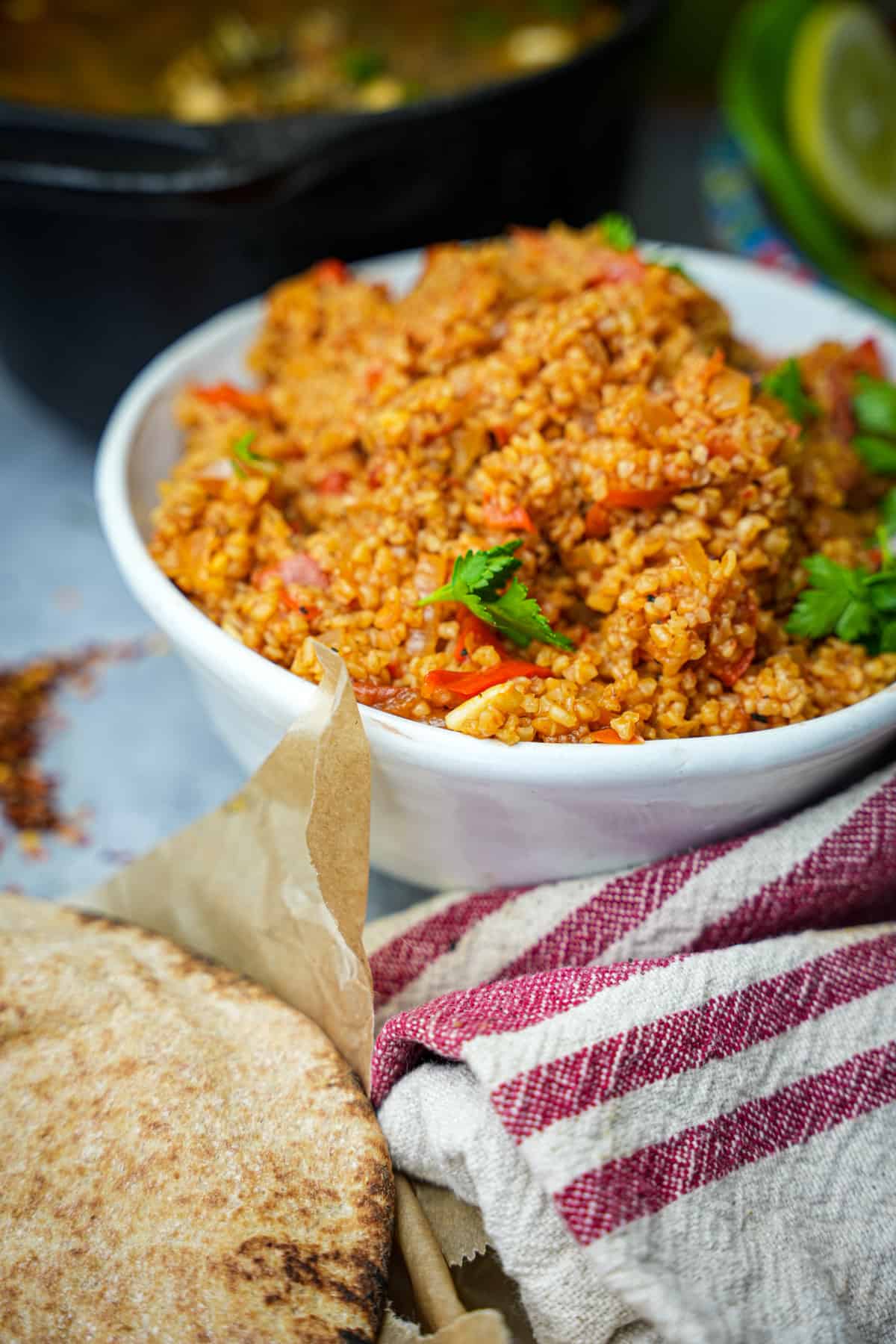
💖My faves to serve with this Turkish bulgur recipe:
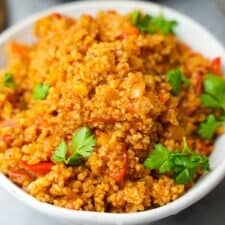
Bulgur Pilavi (Turkish Cracked Wheat Pilaf)
Equipment
Ingredients
- 4 teaspoons olive oil
- 1 medium-sized onion finely diced
- 1 red bell pepper diced small, seeds and stem discarded
- 2 medium-sized tomatoes diced
- 2 cloves garlic minced
- 2 teaspoons tatli biber salcasi
- 1 cup coarse bulgur wheat
- 1½ cups water or unsalted vegetable stock
- 1 tablespoon lemon juice
- ½ teaspoon salt
- ½ teaspoon ground black pepper
- To garnish: fresh parsley leaves and minced chives
Instructions
- In a 4 quart pot, heat the olive oil over a medium flame for 60 seconds.
- add the onion and pepper and sauté for 4 minutes until the onion starts to sweat.
- add the tomato and garlic and stir around for 3 minutes until the tomato starts to break down.
- Stir in the tomato or pepper paste (salça) and the bulgur wheat. Saute the bulgur for 3 minutes, stirring constantly.
- Turn the heat to high, and add water, lemon juice, salt, and pepper.
- As soon as your bulgur wheat starts to boil, place a lid on the pan and lower the heat to low
- Simmer the bulgur wheat for 8-10 minutes until the liquid has been absorbed.
- Remove from the heat and leave the bulgur pilaf covered for 15 minutes as it cools a little.
- Serve the bulgur pilavi with fresh herbs as a side dish.
Notes

Enter your email & I'll send it to your inbox. Plus, get great new recipes from me every week!
By submitting this form, you consent to receive emails from Cinnamon Snail.

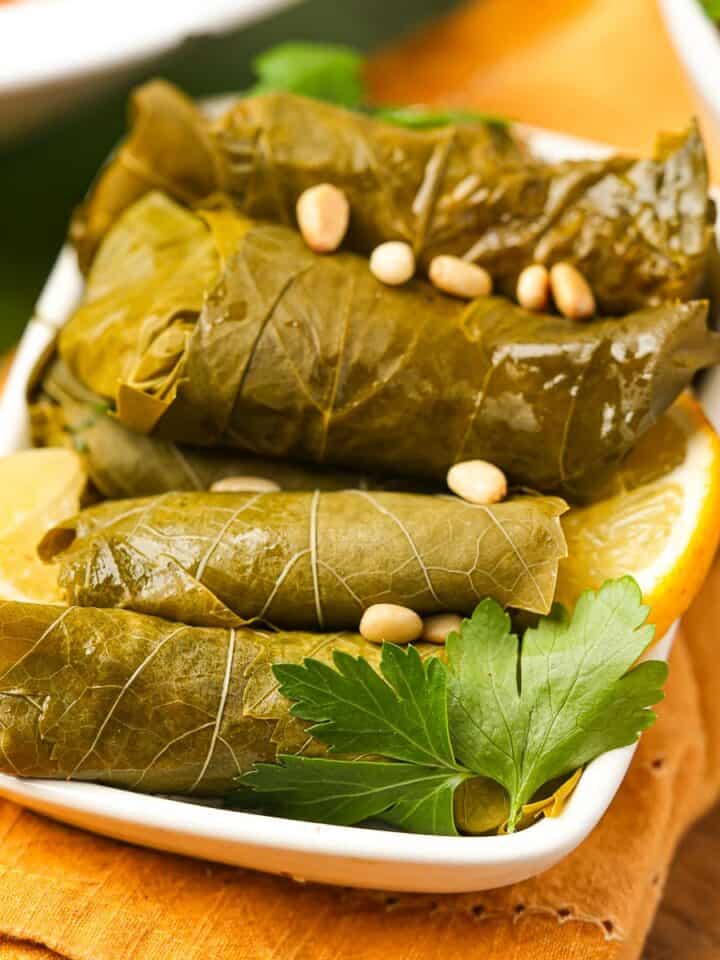
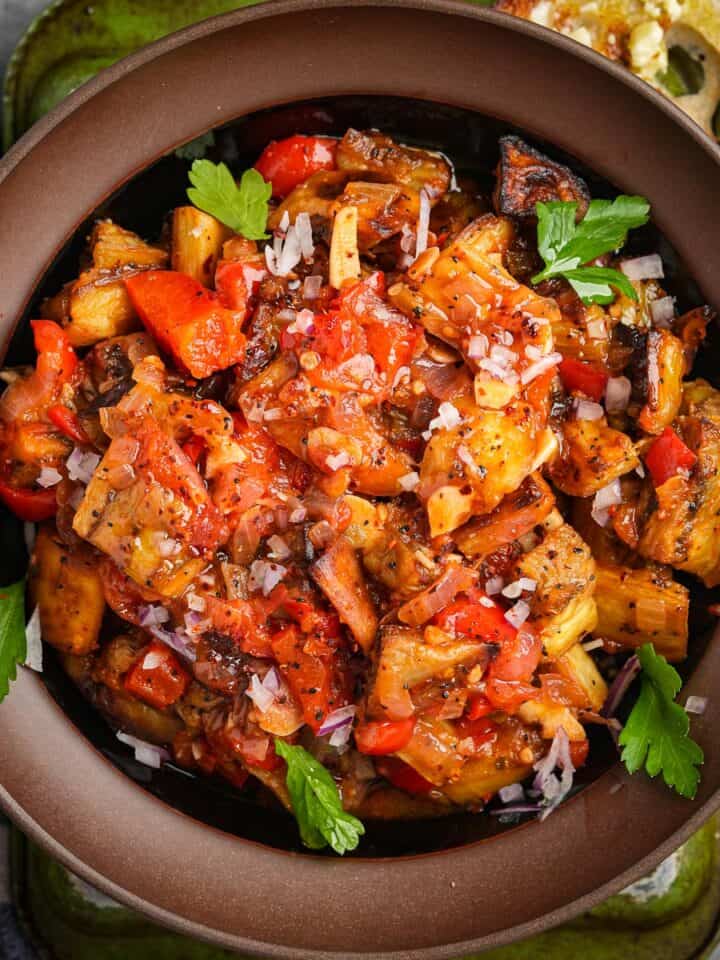
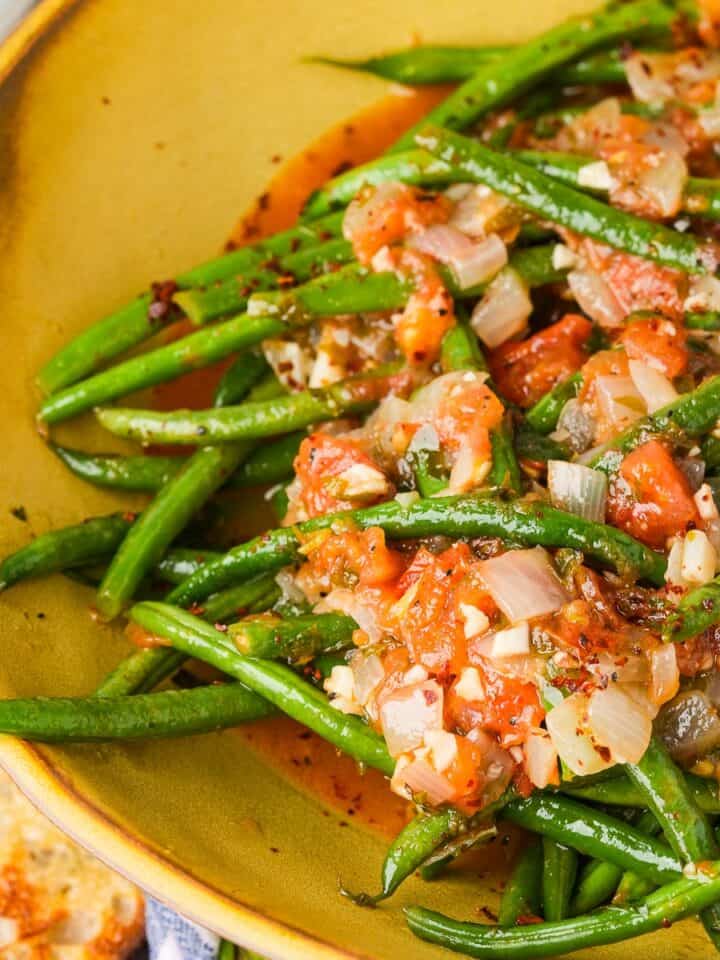


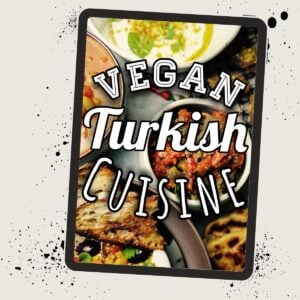



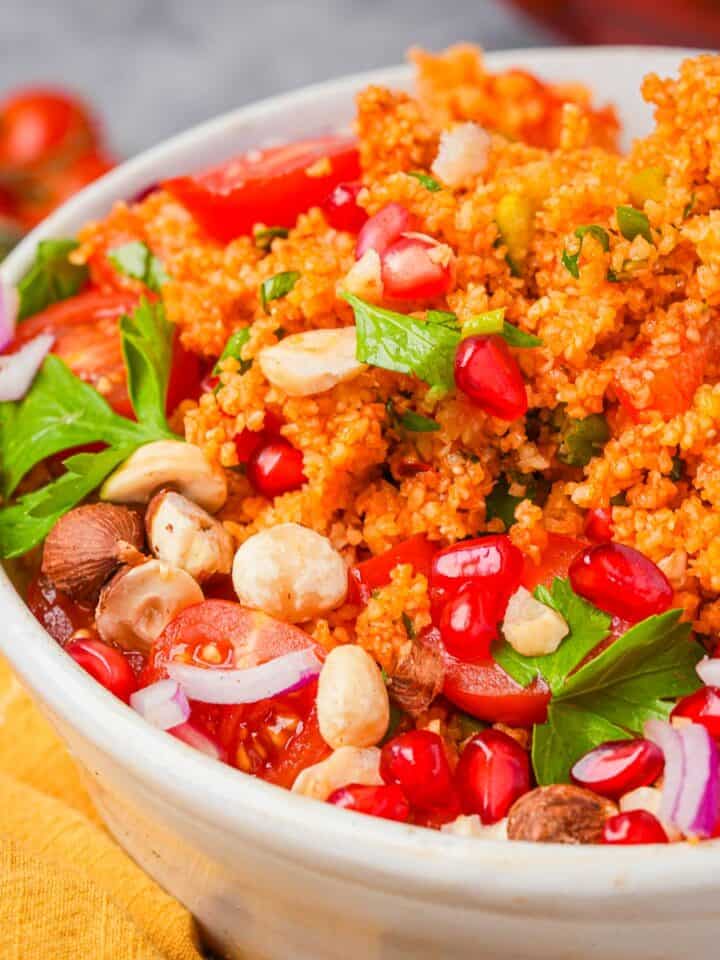
Margo says
So delicious, recipe is perfect, although I added a bit more red pepper paste. Also added chili oil when I served it. Very yummy, reminds me of the times I’ve visited Türkiye. Look forward to sampling more of your recipes! Thank you for sharing.
Amy says
Hi Adam,
Thank you for sharing this recipe! Nice to try something different with bulgar. Quite easy to put together as a side dish or in addition to roasted vegetables with herbs.
Adam Sobel says
Thank YOU for making it, Amy! If you liked this, you might really LOVE my kisir recipe sometime. ❤️
Paige Davis says
I visited Turkey many years ago, and fell in love with their food. I was delighted to discover your recipes and have had so much fun this week trying them all. I have not worked with bulgar in so long, and I absolutely love this recipe! I followed it to the letter and the dish came out perfect. Super flavorful and beautiful and easy. Thank you so much chef Adam!
Adam Sobel says
So glad you enjoyed making these Paige! I fell in love with Turkey too when I visited. It is such a diverse and vibrant country.
HG says
Always looking for other things to do with Bulgur Wheat, so I really appreciated this dish. Years ago, I had this served to me in a Turkish restaurant as a side dish. Unfortunately, the restaurant is out of business, but fortunately I now know how to make an even better version, myself, at home.
Heather says
Very good recipe was super easy to follow and came out great. Really good side for Adam's vegan shawarma. Highly recommend this recipe